The difference of flavor and taste between PWN gold mantenin and Indonesian Sumatra mantenin coffee beans
Indonesia is one of the major coffee producers in the world, and the mellow and unique flavor of its coffee is irreplaceable elsewhere. As the most famous coffee in Indonesia, Mantenin Coffee is the most famous coffee in Indonesia, and there are many friends who can't tell the difference between all kinds of Mantenin in Indonesia.
Qianjie Coffee is popular with Manning Coffee for everyone.
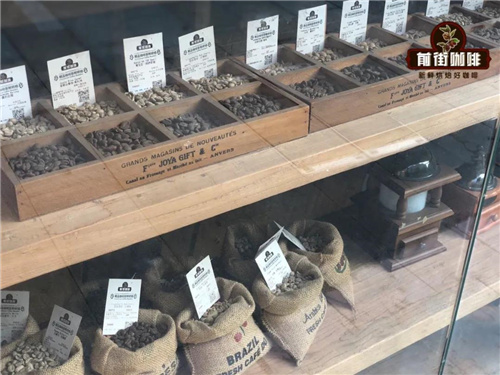
The origin of Manning originally refers to the name of an Indonesian tribe. Japanese soldiers returned to Japan after colonization in Indonesia, thinking about the local delicious coffee, so with the help of trading friends, they asked the locals to help collect high-quality coffee beans. The Japanese love this coffee bean very much, but because of the wrong pronunciation, the local people say "Mandaining", which is called "Mantenin" by the Japanese. As a result, Manning mistakenly hit the coffee bean name in this way.
Manning Coffee is also known as "Sumatran Coffee". Gayo is mostly produced in North Sumatra. Lake Tawa, which is dominated by ateng varieties, can be called Aceh Coffee or Lake Tawa (Tawar lake) Coffee, and the area between Lintong and Lake Toba lake in South Sumatra can be called Mantening Coffee. Mantenin comes from the mountains around Lake Lake Toba, which is located in the north of Medan, the capital of Sumatra, and is an alpine freshwater lake. The average height is about 900 meters above sea level. Mantenin usually refers to Tibica or its variants of coffee beans grown in the mountains around Lake Toba.
[Lin Dong Mantning] Lin Dong Mantning is from the Lindong Mountains of north-central Sumatra, near Lake dopa. Lin Dong Manning is the regular version of Manning. Lin Dong Mantenin also uses the conventional wet planing method, which creates the characteristics of low sour taste and high mellow degree. However, the situation that will occur when using the wet planing method is that because the semi-hard and semi-soft wet raw beans are easily crushed when the pectin sheep skin is removed, the beans are crushed and split like sheep's hoof-shaped beans, commonly known as sheep's hoof beans, which are not defective beans. It can be said that Mantenin is a very prominent feature.

[Tiger Manning] Coffee is the second largest cash export crop in Aceh. It is estimated that there are about 60000 small-scale coffee farmers, each owning about 1 Mel 2 hectares of coffee planting land. Indonesia's traditional way of coffee trade is multi-point supply, starting from farmers, through multi-layer middlemen, slowly accumulate a large number of export goods. In the Indonesian coffee trading system, the direct trade of receiving goods from farmers and arranging for export through a single window is quite rare in Indonesia. Tiger Mantenin's requirement is that the taste will have the aroma of traditional Chinese medicine, and only if the defect rate of more than 17 eyes is less than 4% can be called a tiger.
[aged Manning] the raw beans will age naturally by prolonging the storage time (usually 2-3 years). These changes include weakening acidity, color change and thickening of bean quality. The storage environment must be cool and ventilated. Because the storage environment is dark and for a long time, aged coffee is always difficult to get rid of complex flavors such as musty taste or commonly known as sacks or leather. The special treatment of aged Manning makes it with a more round and profound flavor, as intoxicating as Pu'er.
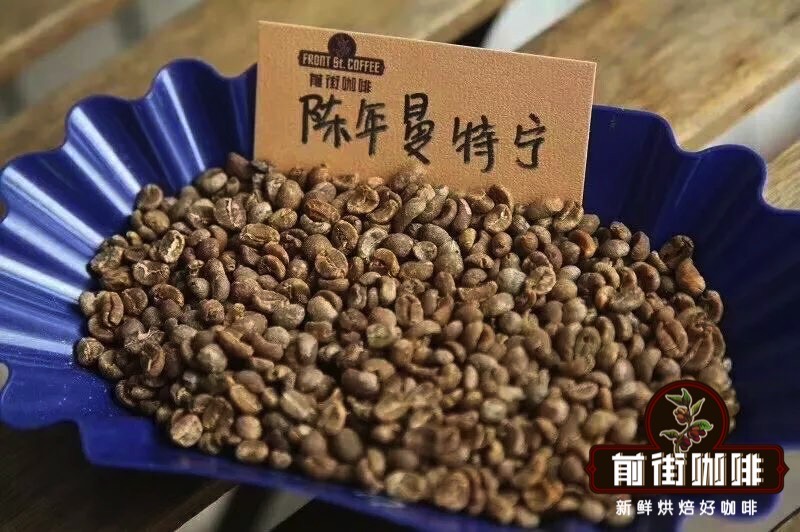
[Golden Mantenin] the Japanese have been very attentive to this coffee bean since it was discovered. In the process of working with local raw bean merchants, they have developed a strict screening system. After the processed raw beans are screened by density color separation, they have to pick the beans manually many times, and finally present a Mantenin with uniform color and uniform bean shape. It is said that when dealing with raw beans, the sunlit mantenin gives off a golden luster, so it is named golden manning. The specification of Gold Manning is more than 18 mesh, and there are less than 3 defective beans (300g raw bean samples). It belongs to the highest grade G1, the color is dark green, and it is a neat flat bean. After strict screening, Golden Manning not only does not have the unique soil flavor of ordinary Manning, but also tastes cleaner and brighter, and the fragrance and sweetness is stronger.
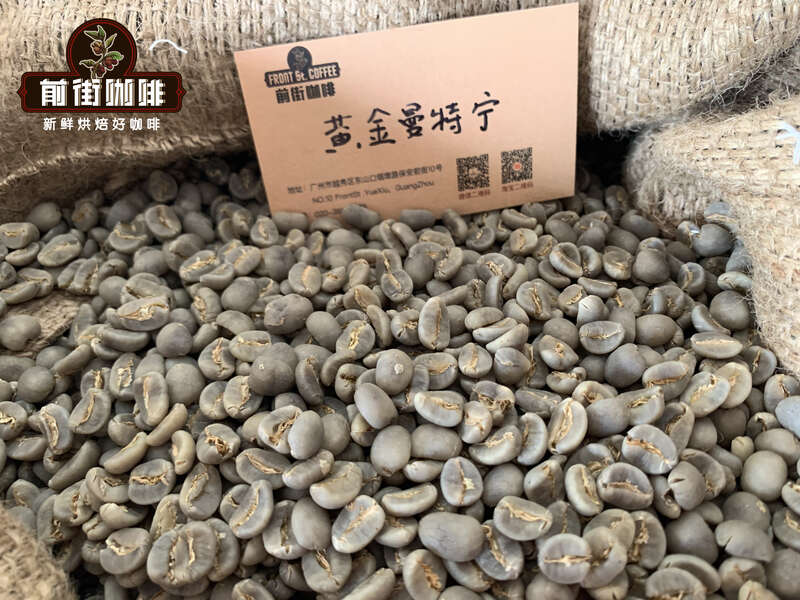
However, the registration of gold manning as a trademark is not a Japanese company, but PWN (Pwani Coffee Company), an Indonesian local company that partnered with Japanese companies to export Mantenin coffee beans, while Japanese companies are registered as "Gold Top Mandheling", that is, Dingshang Gold Mantenin. In fact, there is little difference in flavor performance between the two, but due to different brands and different marketing strategies, it is also possible to lead to a change in public opinion, so it depends on which of the two gold manning is better. Seriously affected by the epidemic, compared with previous years, the resources of ships from Indonesia to China are very tight in 2020, and the new production season of PWN gold Manning, which was originally scheduled to arrive in Hong Kong in October, arrived a month later.
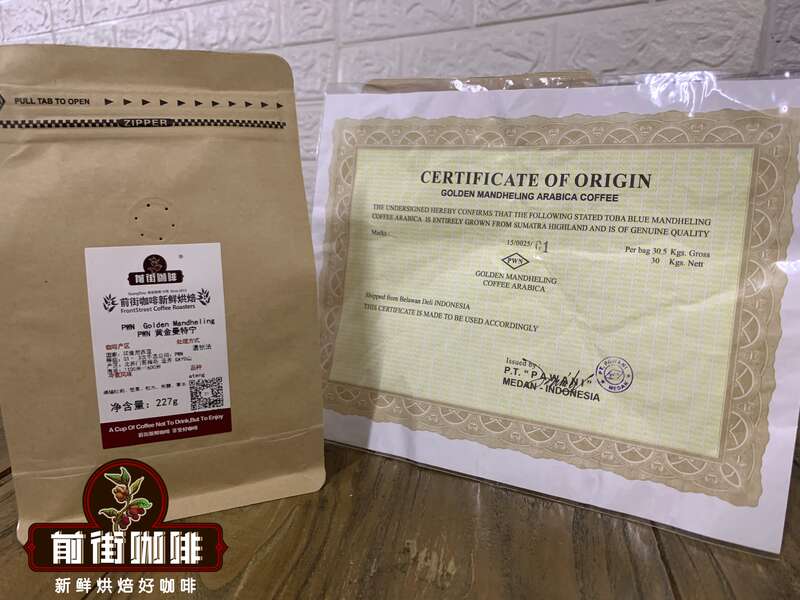
The difference between Golden Manning and Manning is that Golden Manning will have a stronger aroma of sweet and sugar. Although we all know that only PWN Manning will be called gold manning, but in fact the annual output of PWN is not much, so a large part of the selected gold manning is not from PWN, if you are not sure, you might as well ask the seller to provide PWN raw bean sacks or the certificate attached with the beans to know whether it is what we call PWN gold manning.
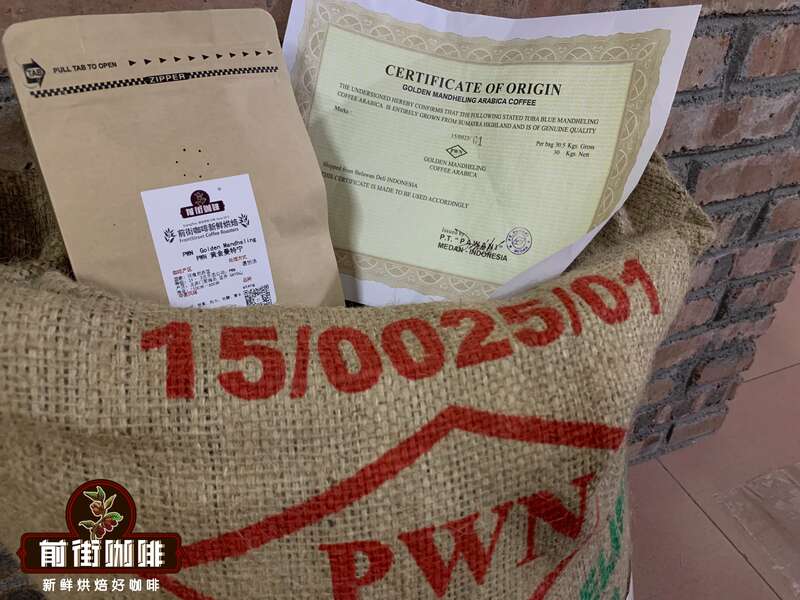
Qianjie Coffee Indonesia PWN Gold Manning
Producing area: Aceh Jiayu Mountain in Sumatra
Altitude: 1100-1600 m
Variety: Ateng
Grade: G1, 3 times hand selection
Treatment method: wet planing method
Mantning mostly uses Sumatra's unique coffee bean treatment method-wet planing. As the local weather is often dominated by Rain Water, with continuous typhoons, it is unable to achieve the good weather needed for the sun, and the local economy is not good, so it is also impossible to use the more expensive way of washing, thus giving rise to the wet planing method with local characteristics. Now the development of coffee in Indonesia is no longer as poor as it used to be, and there are many manors and companies that have certain conditions to use the washing method, but why have they not abandoned the wet planing method? Qianjie Coffee feels that the wet planing method is the factor that has brought Mantenin Coffee to the world. When it comes to Manteni Coffee, I think of the wet planing method, so they already complement each other.
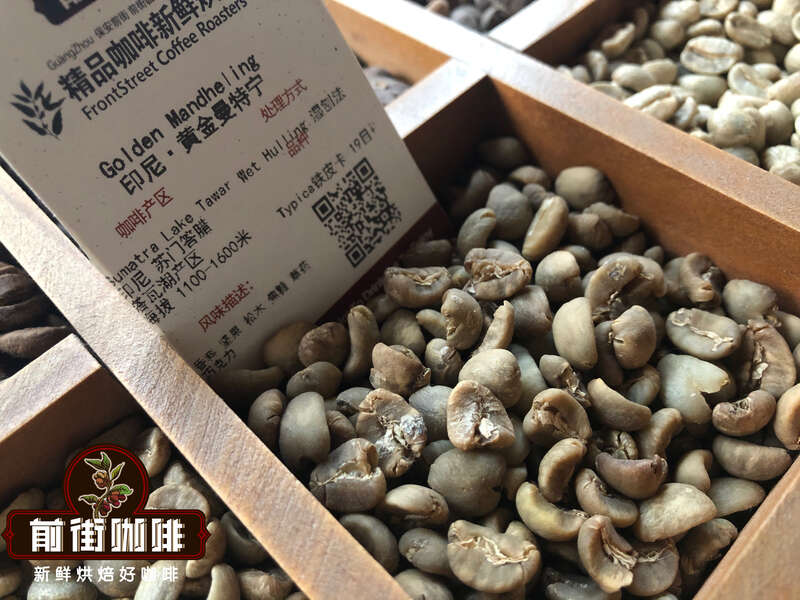
The specific steps of the wet planing method can be divided into the following two stages: in the first stage, the peel and pulp are removed by a wooden peeling machine, and after fermentation for 3 hours, the moisture content is reduced to 30-50% of the semi-dry and semi-wet. In the second stage, the pectin and sheep skin were removed and the latter part of the drying process took 2-4 days, and the moisture content was reduced to 12-13%. Roasting analysis of Qianjie Coffee the roaster of Qianjie Coffee uses medium-deep roasting in order to bake golden mantenin with a mellow, sweet and clean flavor.
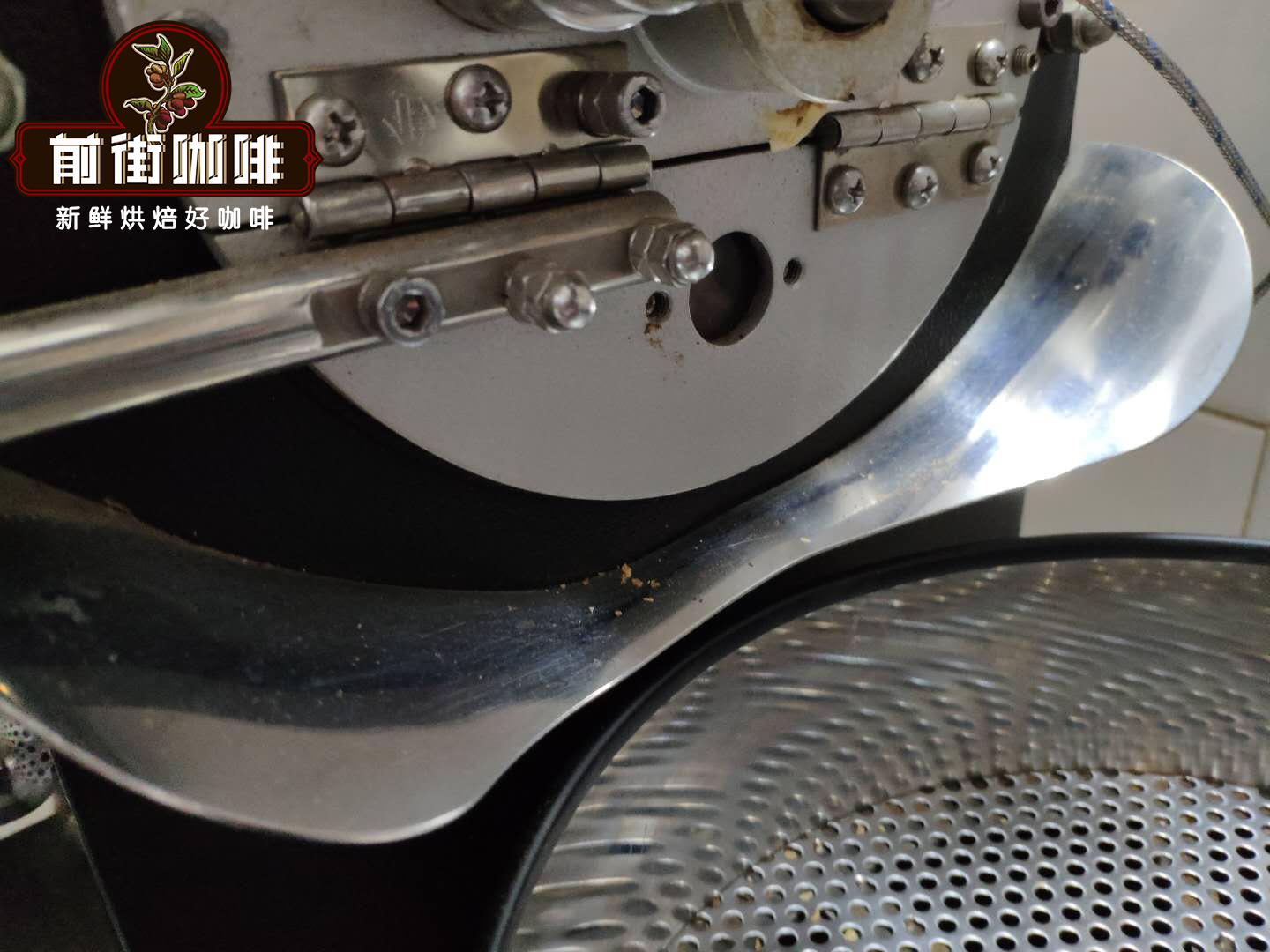
Put the furnace temperature to 200 degrees Celsius, adjust the firepower to 160 degrees after opening the throttle for 1 minute, keep the throttle unchanged, bake to 5: 40 ", the temperature is 148 degrees, the bean surface turns yellow, the smell of grass disappears completely, the dehydration is completed, the firepower is adjusted to 140 degrees, and the throttle is changed to 4. In the 9th '40th minute, ugly wrinkles and black markings appear on the bean surface, and the smell of toast obviously changes to the smell of coffee, which can be defined as a prelude to an explosion. At this time, listen carefully to the sound of the explosion point, start to explode at 9: 54 ", turn the firepower down to 60 degrees, and the throttle is fully open (adjust the firepower to be very careful, not so small as to be free of bursting sound), and put the pot at 204.5 degrees.
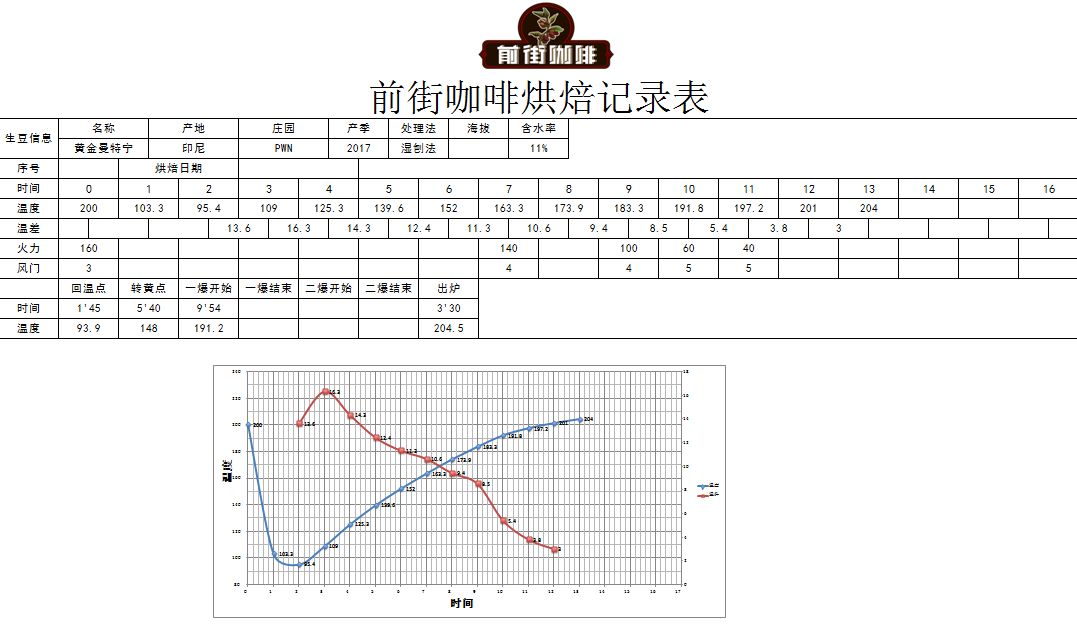
Qianjie coffee brewing suggests that this brew highlights the mellow, clean and fragrant characteristics of Golden Manning and brews it with a Kono filter cup (this filter cup is invented to imitate flannel to make thick coffee). For coffee roasted in medium and deep depth, the degree of grinding is medium and coarse. The ratio of powder to water is 1:15, the amount of powder is 15 grams of coffee powder, and the water temperature is 88 ℃. Warm Tip: reducing the powder ratio can make the coffee taste more full-bodied. Brewing process: slowly pour in the coffee powder, as far as possible in the process of leveling, to avoid shaking the filter cup (because shaking will reduce the distance between the coffee powder, not conducive to steaming exhaust). The coffee powder layer will slowly expand into a "hamburger" when 40g of water is injected in a small circle in the middle of the first section and steamed for 30 seconds.
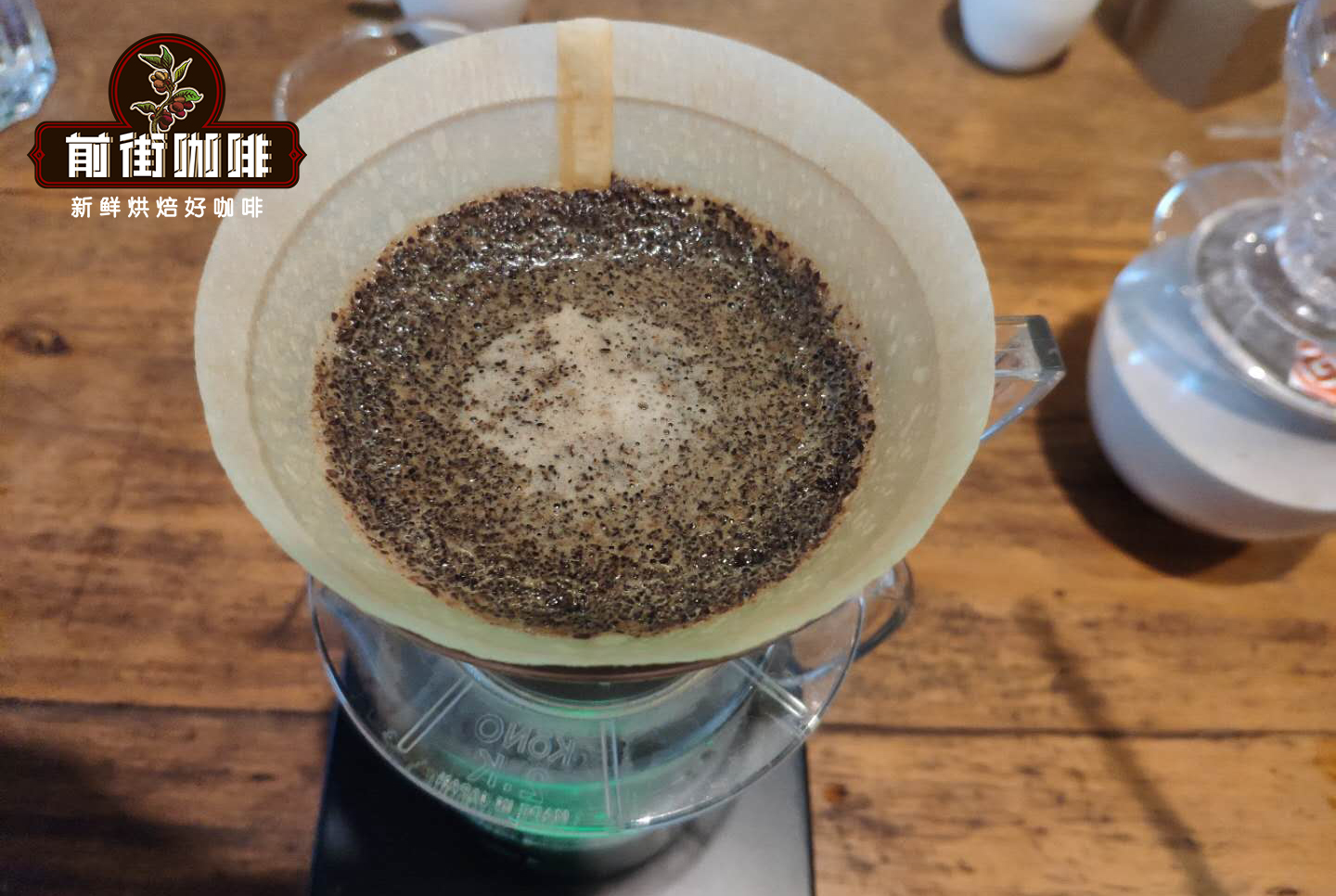
The center of the second section is injected with 120g water in the outer circle, the water injection height is close to the powder layer as far as possible, the action is slow, and excessive mixing is avoided. 100g is injected into the last stage, and all the coffee liquid from the filter cup flows into the next pot to finish the extraction. The extraction time is 2 minutes.
The characteristic taste of Manning coffee:
[Lin Dong Mantenin] herbs, chocolate, caramel, relatively balanced as a whole; [Tiger Mantenin] nuts, cream, dark chocolate, caramel, Chinese traditional medicine, with obvious sweetness, clean and clear flavor; [aged Mantenin] cooked general, caramel, herbs, chocolate, low acidity. [Golden Manning] Nuts, spices, herbs, licorice, chocolate, caramel, clean and soft flavor
Professional coffee knowledge exchange more coffee bean information please follow the coffee workshop (Wechat official account cafe_style)
For more boutique coffee beans, please add private Qianjie coffee on Wechat. WeChat account: kaixinguoguo0925
Important Notice :
前街咖啡 FrontStreet Coffee has moved to new addredd:
FrontStreet Coffee Address: 315,Donghua East Road,GuangZhou
Tel:020 38364473
- Prev
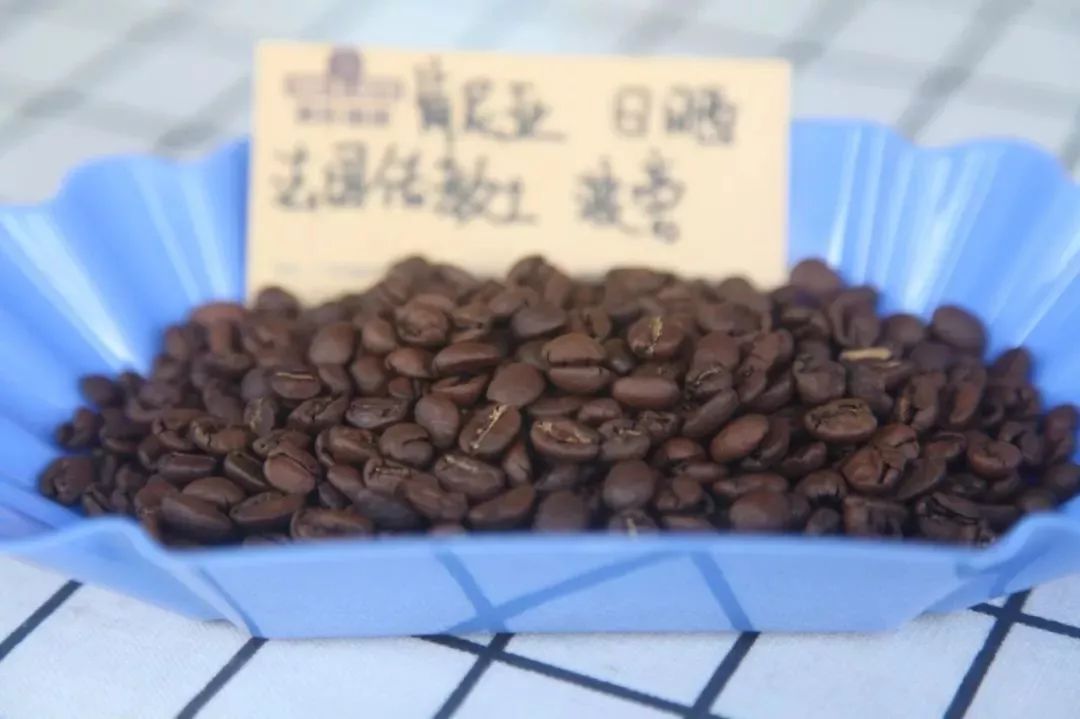
Please sign for it! An extremely rare special report on the Bourbon species of French missionaries in Kenya
Professional coffee knowledge exchange more coffee bean information please follow the coffee workshop (Wechat official account cafe_style) [Kenyan Haniyeh French missionary bourbon sunburn] country: Kenya: Thika) processing plant: Haniyeh (ChaniaEstates) altitude: 1525 m breed: French missionary bourbon seed treatment: day
- Next

A story of Ethiopia's Sida Mohambela Sakui 2.0 in the new 18-year production season
Professional coffee knowledge exchange more coffee bean information please follow the coffee workshop (Wechat official account cafe_style) Ethiopian Sidamo Shakisso Natural Sakuran name: Ethiopia Sunshine Sidamo G1 Sakuran Ethiopian Sidamo Shakisso Natural Coffee country: Africa Africa, Ethiopia Ethiopia, Coffee Manor: Guji Gu
Related
- Detailed explanation of Jadeite planting Land in Panamanian Jadeite Manor introduction to the grading system of Jadeite competitive bidding, Red bid, Green bid and Rose Summer
- Story of Coffee planting in Brenka region of Costa Rica Stonehenge Manor anaerobic heavy honey treatment of flavor mouth
- What's on the barrel of Blue Mountain Coffee beans?
- Can American coffee also pull flowers? How to use hot American style to pull out a good-looking pattern?
- Can you make a cold extract with coffee beans? What is the right proportion for cold-extracted coffee formula?
- Indonesian PWN Gold Mandrine Coffee Origin Features Flavor How to Chong? Mandolin coffee is American.
- A brief introduction to the flavor characteristics of Brazilian yellow bourbon coffee beans
- What is the effect of different water quality on the flavor of cold-extracted coffee? What kind of water is best for brewing coffee?
- Why do you think of Rose Summer whenever you mention Panamanian coffee?
- Introduction to the characteristics of authentic blue mountain coffee bean producing areas? What is the CIB Coffee Authority in Jamaica?

